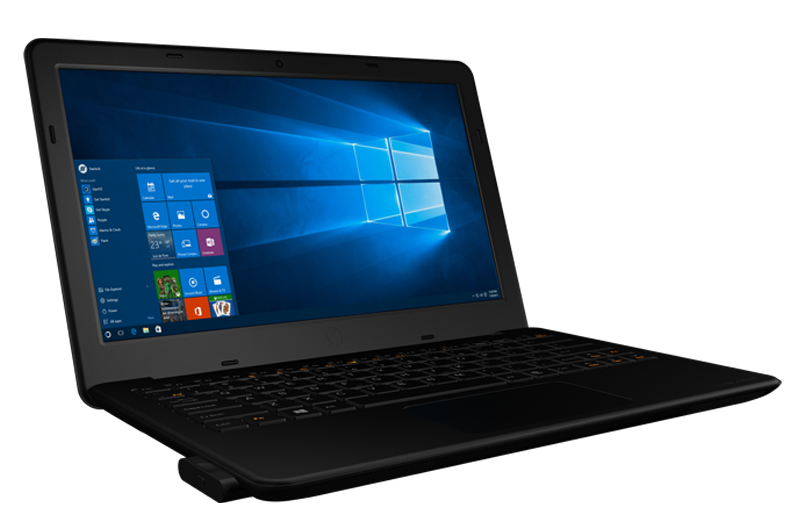Meet The Kangaroo Notebook, A Low-End Modular Laptop
InFocus Corporation announced its new Kangaroo Notebook product line. These laptops are special because all of the key hardware resources are on swappable mini-PC modules. Although modular technology is always a topic of interest, InFocus Corp.’s unique design is rather limited.
The Kangaroo Notebook
The Kangaroo Notebook consists of two key pieces of hardware: a laptop dock and a mini-PC. The laptop dock essentially looks like your typical 11.6-inch notebook. It has a keyboard, mouse, battery, webcam, microphone, speakers and a number of ports. The laptop dock does not have a CPU, RAM or storage device, though. These components are inside of the mini-PC.
InFocus will ship the Kangaroo Notebook with two mini-PCs. Each contains 2GB of RAM, 32GB of eMMC NAND and an Intel Z8350 quad-core CherryTrail Atom SoC clocked at 1.44GHz. The Z8350 also has a boost frequency of 1.92GHz, which it can use for more demanding tasks as long as it remains cool. Each mini-PC comes with Windows 10 pre-installed.
InFocus Corporation’s inspiration for this design was to give multiple users a more secure workspace. All of the files are saved on the swappable mini-PC portion of the notebook, which makes it easier for users to keep all of their files secure from other users. They are also able to lock the mini-PC’s OS so that no one else can use it.
Why Just One Hardware Config?
Although this is an interesting design, it seems rather limited and poorly thought out compared to what it could be. The system uses modular hardware, so it would have been simple for the company to offer a range of hardware configurations for the Kangaroo Notebook. This tactic would have made it easy for you to upgrade the system at any time.
The current configuration should be suitable to give users a basic computing experience, but by offering alternative hardware configurations with faster processors and more resources, it would have made the Kangaroo Notebook more useful for multiple users that need varying levels of performance.
InFocus Corp. could have also gone in the opposite direction, and created a traditional notebook with an easily accessible storage device. This design would make more sense, as swapping the storage device would achieve the same level of security for multiple users. All of the files are stored on the storage device, so there wouldn’t be any risk of another user accessing your files.
Get Tom's Hardware's best news and in-depth reviews, straight to your inbox.
A more traditional notebook design would likely perform better and remain cooler because it could use a better thermal solution. A better thermal design would allow the SoC to maintain its turbo frequency for longer periods of time. InFocus Corp. wouldn’t need to purchase two SoCs, so it would also free up extra room in the budget for a faster processor or reduce the overall cost.
Uncompetitive Pricing
The cost of the Kangaroo Notebook is also problematic. InFocus priced the laptop at $299.99, but it is realistically possible to buy two entirely separate notebooks for less. A key example is Lenovo’s 11.6-inch Ideapad 100S, which frequently sells between $129.99 and $149.99 with nearly identical hardware. Buying two PCs would also be more helpful, as you would have two functional systems instead of just one, and users wouldn’t need to take turns.
The Kangaroo Notebook will ship sometime in mid-October.
-
gggplaya This would make sense in an educational environment. Like if they built the dock into the desks. Students could take their PC with them and not have to worry about charging and stuff. But then again, they could do the same with a virtual machine.Reply


